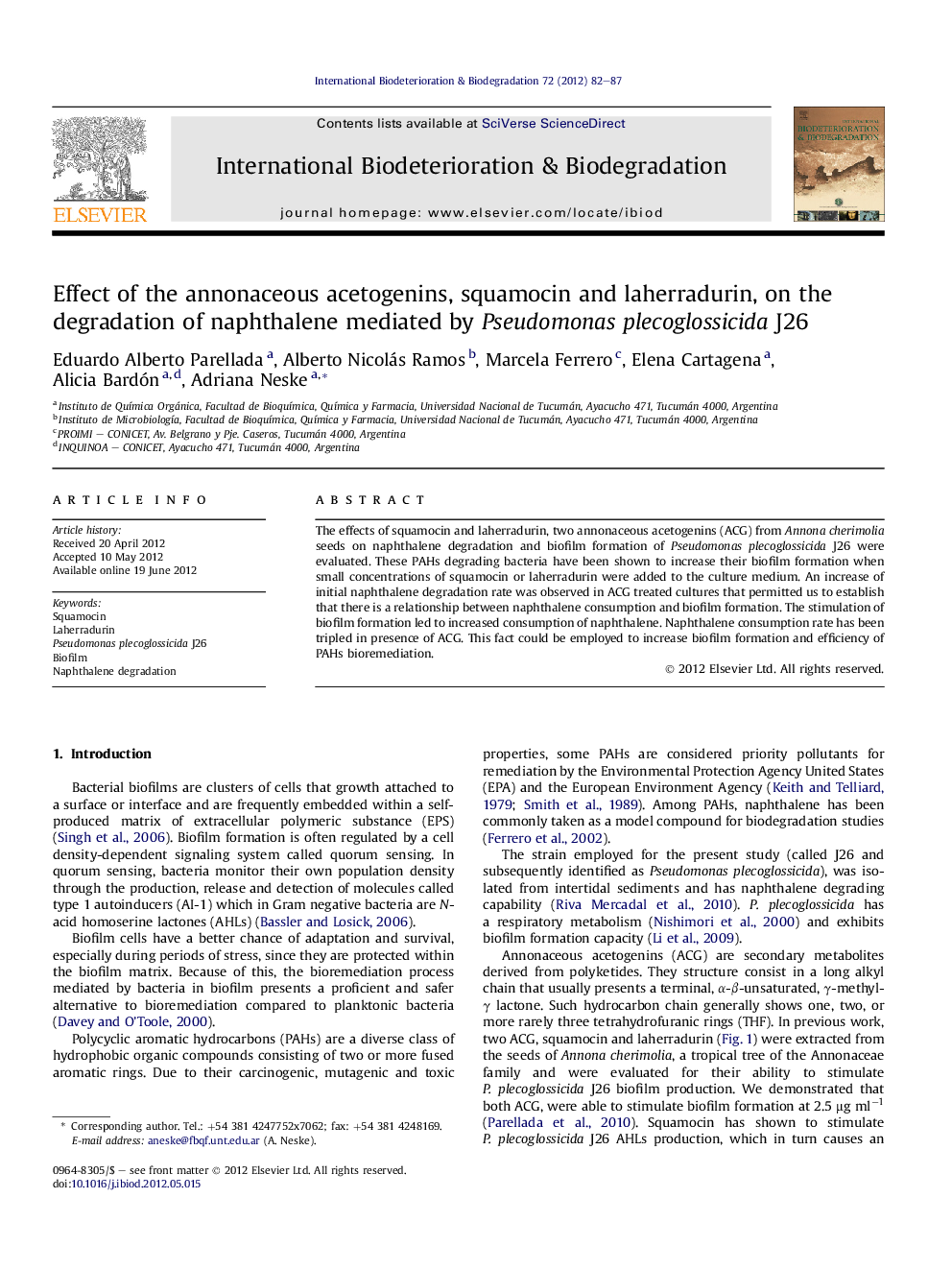| کد مقاله | کد نشریه | سال انتشار | مقاله انگلیسی | نسخه تمام متن |
|---|---|---|---|---|
| 4365164 | 1616343 | 2012 | 6 صفحه PDF | دانلود رایگان |

The effects of squamocin and laherradurin, two annonaceous acetogenins (ACG) from Annona cherimolia seeds on naphthalene degradation and biofilm formation of Pseudomonas plecoglossicida J26 were evaluated. These PAHs degrading bacteria have been shown to increase their biofilm formation when small concentrations of squamocin or laherradurin were added to the culture medium. An increase of initial naphthalene degradation rate was observed in ACG treated cultures that permitted us to establish that there is a relationship between naphthalene consumption and biofilm formation. The stimulation of biofilm formation led to increased consumption of naphthalene. Naphthalene consumption rate has been tripled in presence of ACG. This fact could be employed to increase biofilm formation and efficiency of PAHs bioremediation.
Figure optionsDownload as PowerPoint slideHighlights
► Squamocin and laherradurin stimulate Pseudomonas plecoglossicida biofilm formation.
► Stimulation of biofilm formation led to increased consumption of naphthalene.
► Naphthalene consumption rate has been tripled in presence of ACG.
Journal: International Biodeterioration & Biodegradation - Volume 72, August 2012, Pages 82–87